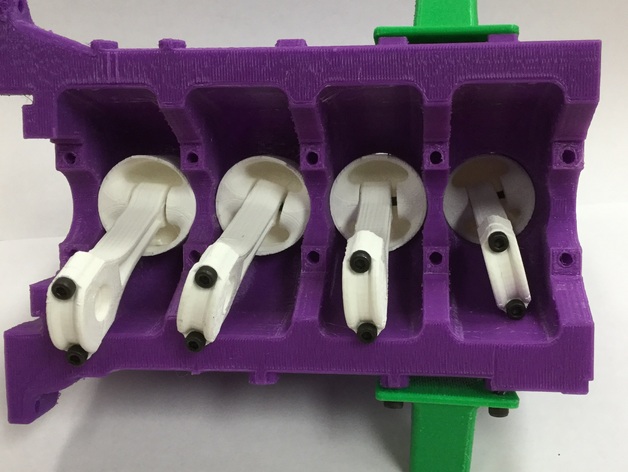
3D Printed Engine in the Classroom
thingiverse
Students use 3D printed models as a substitute for more expensive and more dangerous parts in auto shop. Print Settings Printer Brand: MakerBot Printer: MakerBot Replicator (5th Generation) Rafts: Yes Supports: Yes Notes: I used the recommendations from the original page, where there are assembly drawings and parts lists, How I Designed This I found this on Thingiverse at the request of the auto shop teacher looking for a way to include a special needs student in his auto shop class. Overview and Background We have students in an auto class that have difficulty working on actual cars. This model is an excellent tool to have students work on without the danger of breaking anything of great value. This project came out of an actual classroom situation where a student with special needs could not pass the safety test to be allowed in the shop. He was able to work on this model (which is why there is not yet a picture of the completed thing). The entire time he worked on it, he was able to identify the parts, what they did, and how they were all supposed to go together. Objectives To give students a hands-on experience in auto shop that they may not be able to get otherwise. Audience Grades 9-12 Subjects Auto Science Skills Learned (Standards) Students understand small and compact engines: Understand engine theory for both two- and four-stroke cycle engines. Know different types of small engines and their applications. Know small engine parts and explain the various systems (e.g., fuel, ignition, compression, cooling, lubrication systems). Know how to troubleshoot and solve problems with small engines. Know how to disassemble, inspect, adjust, and reassemble a small engine. Lesson Plan and Activity This engine can be assembled by the instructor and used for demonstration purposes, or it can be used by the student to assemble as a project. In our case, we gave the student the parts (color-coded) with the assembly drawing and he sorted the parts according to the drawings. While he was waiting for the special-order screws to arrive, he attached the parts with string (see drawing). He then started to put things together, but ran out of time at the end of the summer and could not finish. I would recommend having all the parts required before assembly begins. This required close supervision by another teacher just to make sure that the directions were followed. Duration of Lesson Assembling the engine could take two weeks of class time (our student volunteer was not able to get it finished in that amount of time, so it would vary based on the ability of the student.) Preparation Printing this engine requires a large commitment of time and resources. If this is going to be part of a lesson, it is best to start a semester ahead to get it printed. If more than one engine is required, allot even more time. After printing, there is a parts list of fasteners and bearings that will also need to purchased. The small metric screws were difficult to obtain, and had to be special ordered. References http://www.clackamascareers.com/media/uploads/LITINCTELessonPlan-Automotive-EngineDesign.pdf
With this file you will be able to print 3D Printed Engine in the Classroom with your 3D printer. Click on the button and save the file on your computer to work, edit or customize your design. You can also find more 3D designs for printers on 3D Printed Engine in the Classroom.
